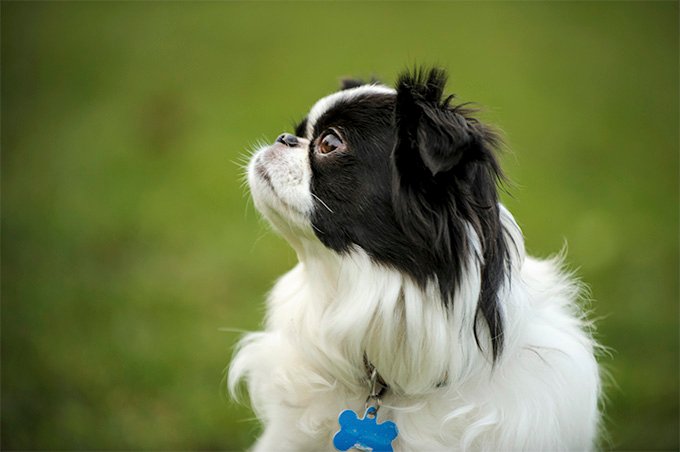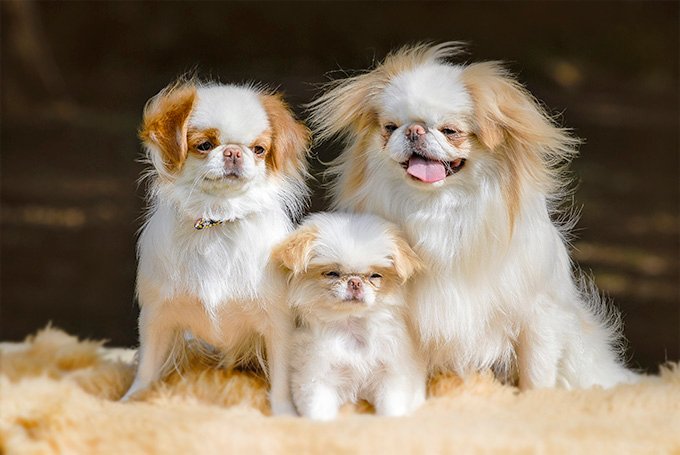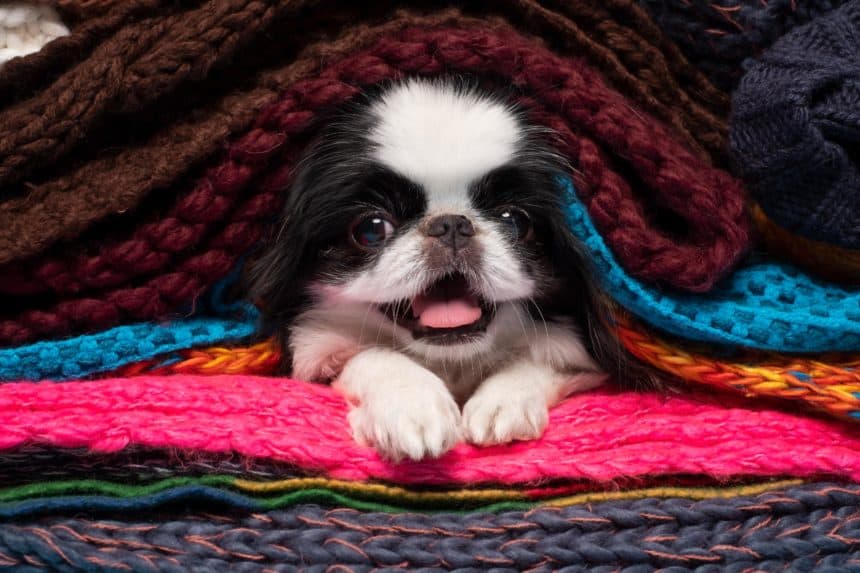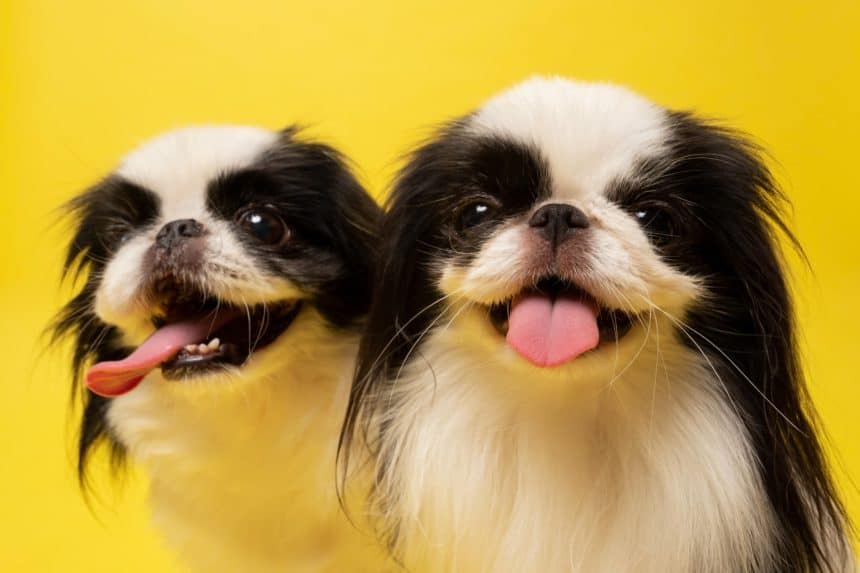The Japanese chin is an endearing little furball with a wide face, large eyes, and a squashed nose. To a large extent, this breed is the quintessential lap dog. In fact, the Japanese affluent bred them to be the perfect pet. They are also more laid-back and laid-back than other toy breeds, so they’re great for families. Learn everything about the Japanese chin by reading on!
Defining Traits of the Japanese Jawline

This breed is deeply rooted in the upper classes. If you pay attention to their large pupils, you may be able to see similarities to royal dogs in oil paintings.
For how clean and professional it is, the Japanese chin is quite serene. Because of their common passion for cuddling, these pets are great companions for owners who love to curl up on the couch. Their long, luxurious hair hides their small chins, giving them the appearance of royalty. The most popular colors are black, lemon, and sable/white blends.
Additional distinctive features include the chin’s wavy, crumpled appearance and bloated tail. This is unfortunate as these features were designed to be attractive rather than useful. Many suffer from breathing difficulties due to their short muzzles.
Comparison of Size and Life Expectancy

These canines are quite little. Both their height and weight range from 7 and 11 pounds, with the former being average. You can’t tell how big they are without seeing them wet, so don’t be fooled by their thick locks.
Although delicate, a Japanese chin with proper care may survive for up to 12 years. For one to die before the age of ten is quite unusual. It is important to choose a breeder that takes responsibility and checks for hereditary diseases that might limit the life of a chin.
Protective Capacity
The Japanese chin is completely incapable of protecting its owner or other members of the household. He would make a few weak barking noises if someone were to break in, but these dogs usually rely on their owners for protection.
Training

These canines are unpredictable and will not listen to instructions. It is a great tip to train them that they are in control of every detail of the instruction. They will be depressed if they show disapproval.
You should be able to achieve this result if your approach emphasizes rewards. Although they can be stubborn at times, this breed is never malicious. Although training treats can be helpful, it is important that the dog doesn’t eat too many. Because there are so many, you only need a little.
To get the Japanese chin, it takes a lot of practice. They were designed to be lapdogs and they do well in that role. Engage in short, fun sessions to keep your chin busy. Many people find great satisfaction in mastering simple commands such as “shake” or “rollover”.
Energy Level
These canines are small but have a lot of energy despite their petite stature. They can weigh anywhere from 7 to 11 pounds. They love to play, but can’t keep up with strenuous activities. This dog is not for active families.
A Japanese Chin’s Life: It’s a Reality
It is a pleasure to have such a playful, friendly pet. They love to be loved and make great lapdogs. They do not require strenuous exercise, but they need to be socialized with others. People are susceptible to anxiety until they have such assurance.
The chin can be the best friend of an elderly person. They are great with older children, but they would not be suitable for young, rambunctious kids.
This species is in fact quite vulnerable. Japanese chin pups are particularly vulnerable. If they jump off high furniture or are stepped upon, they could injure themselves. This should alert their owners so they can take the necessary precautions to protect their dogs.
Proper maintenance of the Japanese Chin
People underestimate the amount of work involved in caring for a dog. These dogs can be fragile and require protection. Many people feel that this trade-off is worthwhile because they love their dogs so much.
Needs in the Environment
The cold tends to cause problems for the Japanese chin. These dogs don’t have enough bulk to control their body temperatures. A chin cannot handle the weight of deep-snow.
Although they don’t require much space outside, it is important to keep them safe. These dogs are great for small living spaces such as apartments.
Requirements to do physical activity
Regular exercise is important for the Japanese chin. Walking is an option, but they have limitations. Be patient and go slowly.
A short sprint in a small space is enough to clear your mind. These dogs thrive more than any other breeds because they can run and play outdoors. They can become very excited at times. They are easily enticed by intriguing odors and moving objects, and will run away. This is best done inside any structure with a roof.
Prepare for Exposition and Bathing
The Japanese chin is well-known for its gorgeous coat. Regular care is required. However, maintaining one’s mane is easier than you might think.
These dogs require frequent brushing to prevent mats. A month between baths is enough for these dogs. This breed will shed some hair, but not too much.
An infection in the ears can cause severe discomfort to the jawline. It should be checked regularly. To prevent discomfort, their rapid growth requires regular trimming.
The Perfect Setting for Home Sweet Home
This breed is great for apartment living, as it can live in tight spaces. Although children would be able to have access to the outdoors, a small yard is sufficient. For extra exercise, you might consider adding dog parks and walks.
A Japanese chin needs a home with a loving owner. They are not happy with people who want to take them out, and prefer to be at home. Someone with more maturity and discretion than a youngster is better to own a chin.
Dogs are fragile and must be kept safe. However, their owners should be vigilant as well. It is important to keep them from jumping or overexerting their limits.
Cause for Worry Regarding Your Health

This breed is considered healthy. Most Japanese chins are affected by their breeding. The goal was to breed for cuteness, not practicality.
Because of the narrowness of their nostrils, they may have difficulty breathing. These canines have shorter legs than their backs, which makes breathing difficult. They often experience painful episodes where their kneecaps become detached from their joints. The distinctive eyes of the chin are susceptible to scratches and eventually develop cataracts.
Responsible breeders might check for additional problems. This category includes epilepsy, heart murmurs and Tay-Sachs diseases. This is a progressive, deadly neurological condition.
Problems with behavior
Many people believe that the Japanese man’s intellect is what causes his chin problems. These dogs are dominant and spoilt. They aren’t malicious, however.
Dogs can develop separation anxiety, and bark or chew when they are left alone. This breed can be distracted even if they are on a leash.